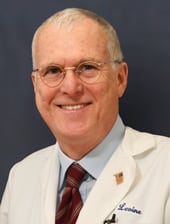What could be less intuitive than a shrinking medical specialty in the face of surging demand? A recent New York Times article discussed the growing shortage of geriatricians in America. Despite the fact that there are more older Americans than any time in history, there are only about 7,000 geriatricians in practice in the United States. The article points out that the field is becoming even less popular as the elderly population grows – a phenomenon that can impact the quality of care for older adults.

As a fellowship trained geriatrician I ask myself, “So where is the news?” Geriatricians have been aware of these facts for years.
Back in the 1980s I came across an article entitled “Geriatrics: A Specialty in Search of Specialists.” This article took a historical approach to define why geriatrics was destined to struggle as a specialty. The author reviewed prejudices about treating elderly patients, and discussed attitudes of medical fatalism that projected a model of senescence as a progressive, incurable disease. Making the future of geriatrics cloudier, there was lack of conviction among medical professionals that the specialty was even necessary.
As a young idealist who enjoyed caring for older people, I took this article as a challenge. I decided to push ahead and confront the prejudices of ageism, training at a top academic center to become a geriatrician.
As the years unfolded the aging demographic continued to surge but the field did not attract applicants in large numbers. At the time I entered training the fellowship requirement was two years. By 1998 the American Geriatrics Society recognized that few physicians were choosing geriatrics and the requirement was shortened to one year in the hopes of expanding the applicant pool. Unfortunately this strategy did not pan out, and Geriatrics is still struggling to attract young doctors. Reasons noted by the New York Times article include low salaries and lack of experimental new drugs and technologies.
In 2008 a report entitled Retooling for an Aging America was released by the Institute of Medicine. This report noted that the healthcare workforce was critically unprepared to meet the needs of the elderly, and our country faced an impending health care crisis with increasing numbers of older patients. The lack of geriatric specialists results in care that falls short of acceptable levels of quality, particularly for those patients with multiple chronic comorbidities. Most medical schools today have integrated geriatrics training into their core curriculum, but there are still a dearth of practicing geriatricians.
So where is the surprise with the New York Times article? The newsworthiness lies in the growing gap in numbers of geriatricians versus the continued need. Hopefully some of the recommendations in the IOM report will come into effect that make the field more attractive, including improved models of care and changing the financial incentives inherent in our current system.
* * * * * * * * * * * * * * *
References for this post include:
As Population Ages, Where Are the Geriatricians? New York Times Jan 25, 2016.
Geriatrics: A Specialty in Search of Specialists. Zeitshrift fur Gerontologie 1984; 17(1) 26-31.
Retooling for an Aging America: Building the Healthcare Workforce. Institute of Medicine 2008.
* * * * * * * * * * * * * * *
Related posts:
Insights into Geriatrics from Cartoonist Roz Chast
The Story Behind the AGS Annual Meeting Program Cover
Retooling for an Aging America: The Thud that Should Have been a Bang
* * * * * * * * * * * * * * *
Please note: The content of this site is the sole responsibility of Jeffrey M. Levine MD and does not represent any affiliated medical centers.
